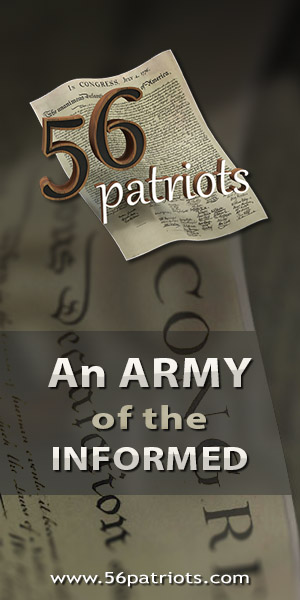Publisher's note: The author of this post is Dr. Troy Kickler, who is a writer for the John Locke Foundation.
RALEIGH North Carolina has, over time, developed a reputation as a battleground state. Tar Heels may be surprised to learn, however, that North Carolinians, with opposing opinions, once unfortunately settled their political debate on an actual battleground -- the 1771 Battle of Alamance.
The Regulator Rebellion lasted from 1768-71. (There had been prior distrust of the royal government, but it intensified after the 1759 Enfield Riots.) Opposition increased exponentially in the late 1760s. Many started to consider the North Carolina royal government as duplicitous.
Hailing mainly from the Piedmont, Regulators criticized what they deemed excessive legal fees and increasingly intrusive government meddling in private matters. They also criticized what they considered political corruption and cronyism. The royal government and many eastern North Carolinians (including some future American founders), however, thought differently.
A particular complaint regarded the construction of Tryon Palace, one of the largest and most ornate buildings in colonial North Carolina. Many Regulators threatened not to pay any taxes to fund its construction, a project that lasted almost four years. Although not ostentatious by modern standards, many Piedmont farmers -- who typically lived in one- or two-room dwellings -- considered Tryon Palace to be lavish.
The noted evangelist Rev. Shubal Stearns of Randolph County and other Baptists from the Sandy Creek Association (founded in the 1750s) took umbrage with the colonial government. Their religious and political views fostered a defiance of government establishment. They petitioned the royal government to stick to its legitimate functions. Sheriff Edmund Fanning labeled their actions as an insurrection. The association, therefore, disbanded to avoid charges of treason.
The Regulators formed in 1768, and many chose not to pay taxes. As a result, property, including horses, was seized, and farmers' livelihoods were threatened. They then took targeted action, in particular making a local sheriff ride a horse backward in Hillsborough, hoping to shame those they considered unlawful government officials. Fanning, however, intensified the situation by labeling them "rebels" and "insurgents."
In 1770, Regulators assembled once again in Hillsborough -- this time to disrupt the court and bring attention to their demands. In March, Regulators, armed with clubs and whips, packed the courthouse and asked to be jury members. The court ignored their requests.
Outside the courtroom, frustrated Regulators attacked a lawyer and then re-entered the courthouse, seized Fanning, and beat him, too. Both men eventually escaped, but were soon found. Under duress, both made agreements with Regulators, and Judge Richardson Henderson agreed to continue holding court the next day -- and then the judge fled town. As a result, agitated Regulators targeted Fanning. They ran him out of town, plundered his home, marched with his effigy through Hillsborough, and destroyed a church bell he had donated.
The political (and some historians argue religious) conflict ended on a Piedmont field. Earlier in 1771, the Assembly passed a Riot Bill. The act made assemblies -- defined as 10 or more people -- unlawful if they refused to disperse within an hour after the bill was read to them. Law enforcement agents were not held accountable if they injured or even killed rioters while dispersing them, and the bill allowed for the establishment of emergency courts and the declaration of rioters as outlaws.
The Riot Bill was invoked before the Battle of Alamance occurred. There, Piedmont farmers clashed with North Carolina militia, mainly comprised of eastern North Carolinians. Although the Regulators outnumbered the militia, they were outgunned and outmaneuvered. After two hours, Regulators fled the field, and Royal Governor William Tryon and the militia settled the political dispute.
Shortly afterward, six Regulators were hanged as an example, and amnesty was offered to all who pledged an oath of allegiance.
Although current political debates in North Carolina can be heated, the Old North State, thankfully, is not literally a battleground state.

























